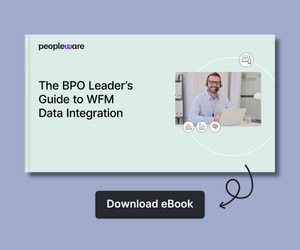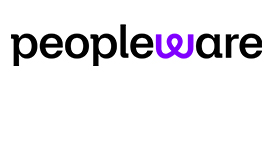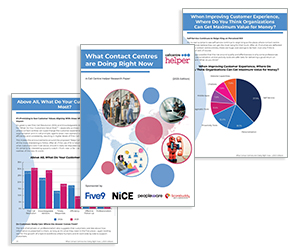Charles Watson of injixo reviews best-in-class practices for achieving service level by adjusting the number of available agents (supply) and the amount of incoming workload (demand).
Busy Time, Time to Shine
Whether your peak is during the holidays or another time of the year, peak is your time to shine. This is when your actions, processes and use of technology can make all the difference for your organisation.
An example from within the contact centre industry:
When I worked in healthcare here in the US, benefits reset at the start of the year. So our volume on December 31st would be light, and our volume starting January 1st would be very heavy… starting at exactly midnight. I was working in the pharmacy division, so people who needed their medications refilled on some government programmes were eligible for a fresh set of benefits on January 1st. We were in a mail order pharmacy, so a member would call in to have a prescription refilled and we would ship it within a day.
You can imagine with medications, you have to make sure you’re there for your customers. It wasn’t simply a matter of not having people wait. If they couldn’t get through to us, they might not get their medications. Our processes for service level had to be best in class.
Supply and Demand in Your Contact Centre
A good way to break down how to achieve service level is into supply and demand, because they are very different problems that can be tackled with different tactics. Supply is the number of call centre agents available to service your customers. Demand is the volume coming in that you have to service. It’s the calls, emails and chats and the handling time associated with them.
Tactics to maximise the supply
At the weekly level, you can use overtime to make agents work more weekly hours at peak times. Normally, you will have to pay a higher hourly rate for overtime. But if you’re in the UK and some other European Countries, you are more flexible to distribute the working hours of your agents across the year without paying extra. We called this “annualised hours” when I was working in Europe. Agents would be scheduled for fewer hours on slow weeks and more hours on busier weeks. They would get paid the same amount every week, regardless of their schedule. This can be a real win-win for your agents and the business. In many cases, agents are working less in the slower summer months and compensate for that later in the year.
Another tactic is to reduce out-of-office and in-office shrinkage. At peak times, you should try to limit your out-of-office shrinkage as much as possible. As with all of these suggestions, you have to balance employee well-being with your business objectives. In the case of out-of-office shrinkage, you have to be extra careful. If you completely restrict paid time off and vacations, people might call out sick. While there may be penalties for this, it doesn’t help your immediate objective, which is to maximise supply.
In-office shrinkage is much more within your control. You can argue that during peak season, whoever is in the office should be dealing with customer requests. There is nothing more important than that. If your peak is 4 weeks or less, you should close out all offline activities and have “all hands on deck”. When you do your annual planning, you can plan 12 months of shrinkage (like training sessions and coaching) across the remaining 11 months.
Dealing With Resistance
Build a plan for how you’ll maximise supply and align staffing to workload across the week well in advance of your peak season. The techniques I’ve listed above are pretty straightforward. But in reality, you’ll have a lot of headwinds. Can you answer these questions and objections if asked by your counterparts in operations.
- We can’t move schedules, because it’ll upset employees. What can you do to “fix” things without moving people?
- How can we service our customers right if we can’t pull people off for training?
- My agents need to be able to take paid time off all year. We can’t block out a month.
- I need agents to help with projects because team leaders are overworked. We have to pull them off the phones.
I’ve come across all of the above and more. If you haven’t yet, just wait. These are the types of problems you just can’t solve on your own. You need to get alignment on how your organisation is going to balance all of the competing needs. The most important metric for you may be service level, but it’s only one of many the operations team has to manage.
The easiest way to resolve all objections? Hire more people. Build it all into a plan and calculate the associated costs. If the objections that people raised are truly important, then senior leadership should fund the additional staff. If they don’t, it’s up to you to call out the risks and show that you will be sacrificing service levels. Push your point and have the data ready, but once the decision or trade-off is made, do your best to maximise service level within that decision.
Calculate How Well the Supply Meets Demand
Let’s now look at methods to see how your supply is aligned across the week. The easiest way to do this is to take the percentage-based distribution of your weekly staff hours for each day of the week and compare that to the percentage of workload for each day.
The workload is the number of calls multiplied by AHT. You could do the comparison also with the percentage of calls instead of the workload. But if you have variations in AHT, the result would be less precise.
The table below compares a scheduling run against the workload distribution in a contact centre I was working with. When we compared the percentage of staff hours with the volume instead of workload, the numbers were pretty close. But we had a higher than average AHT on Monday and you can clearly see we’re understaffed on Mondays when compared to workload. You can also clearly see we’re understaffed on the weekends. I therefore recommend using workload instead of volume for these comparisons.
| Mon | Tues | Wed | Thur | Fri | Sat | Sun | |
| % of staff hours | 19% | 20% | 21% | 19% | 17% | 2% | 2% |
| % of workload | 23% | 21% | 18% | 17% | 13% | 5% | 3% |
Tactics to Control Demand
Okay, for most workforce management teams, the section on supply sets them up for peak season. But you want to be the best, so let’s take it one step further! If you believe it or not, in most cases, you can not only influence the supply, but also the demand.
An example: How you can influence demand
At another company I worked for, we would send out invoices via email to customers twice a month on the 1st and the 15th. Once invoices were received, calls would start coming in and the spike would last 2–3 days. The billing department thought they were doing us a favour splitting up the invoices across 2 days instead of sending them all at once.
The reality was that in planning, I had to layer the typical Mon–Sun volume distribution with a special billing distribution. That’s pretty easy to do mathematically (although it can be time-consuming), but the real problem was that we often couldn’t react to it. Agents had weekly schedules. We always missed service levels when the invoices went out on Sat, Sun or Mon. We couldn’t absorb a weekend spike, and Mondays already had a lot of volume, so the added volume from the invoices was just too much.
Keeping in mind that schedules were weekly, the best option was to have invoices go out on the same day of the week each time. We created views that showed the staffing vs. requirement on billing and non-billing weeks with the current set-up. We then compared this to a view we created showing how it would look if we had invoices go out every Wednesday.
The charts spoke for themselves. We could keep demand relatively even across the week with the new option, because as regular volume fell off mid week, it was just replaced with invoice volume. By shifting the sending of the invoices to Wednesday, we achieved a reduction in cost and an improvement in service level.
The net effect was that we drove a change in demand. We did it by letting the data tell a story, and influencing the business to adjust a process to help the contact centre operate more efficiently.
If you look into your volume drivers, you’re likely to find opportunities like this. They may not be as dramatic, but if you have limitations with your staffing, anything you can do to influence your demand can really help.
Controlling Demand With Call-back Technology
In addition to changes to business processes, there is technology available that can help you “bend the demand curve”. Call-back technology allows you to set a threshold for customers to be offered a call-back.
I’ve used this technology in several different companies. Set the threshold you want people to wait (I generally use 2-minute wait time) and the system will offer a call-back to the customer within a certain amount of time. If your normal wait time is 10 minutes, it may offer a call-back within 9 to 11 minutes.
The time it takes to connect the customer to an agent stays basically the same, but they don’t have to wait in line. Your customers can go about their day, and you do the call when you have capacity. There are more advanced ways to use this type of technology, but that’s the base use case scenario. We received great feedback from our customers, because they waited in line without actually waiting in line.
Conclusion
I can’t stress enough the importance of planning and alignment with operations. You can’t be successful if you’re trying to execute the above tactics ad hoc, or if you’re doing it completely in isolation. When you pre-align with your partners in operations, your success rate increases significantly. You can also use this alignment to educate them on workforce management principles. The more they understand what you do and how you do it, the better the partnership will be.
When your season is over, take the time to do a thorough post-mortem analysis. Mistakes will be made. You’ll have areas where you underperform. If you take the time to really understand what went well and what didn’t (and why), you form a culture of continuous improvement. It’s not about pointing the finger, it’s about transparency and learning. Every year you can perform better than the last one.
This blog post has been re-published by kind permission of Peopleware – View the Original Article
For more information about Peopleware - visit the Peopleware Website
Call Centre Helper is not responsible for the content of these guest blog posts. The opinions expressed in this article are those of the author, and do not necessarily reflect those of Call Centre Helper.
Author: Peopleware
Published On: 2nd Jan 2019 - Last modified: 8th Jan 2019
Read more about - Guest Blogs, Peopleware






 Peopleware is a leading workforce management (WFM) solution, trusted by over 500,000 users in 30+ countries. With smart forecasting, automated scheduling and real-time management, organizations can optimize workforce efficiency and keep work aligned with demand. From precise time tracking to flexible planning, Peopleware helps organizations boost operational efficiency and foster a more engaged, productive workforce.
Peopleware is a leading workforce management (WFM) solution, trusted by over 500,000 users in 30+ countries. With smart forecasting, automated scheduling and real-time management, organizations can optimize workforce efficiency and keep work aligned with demand. From precise time tracking to flexible planning, Peopleware helps organizations boost operational efficiency and foster a more engaged, productive workforce. 































